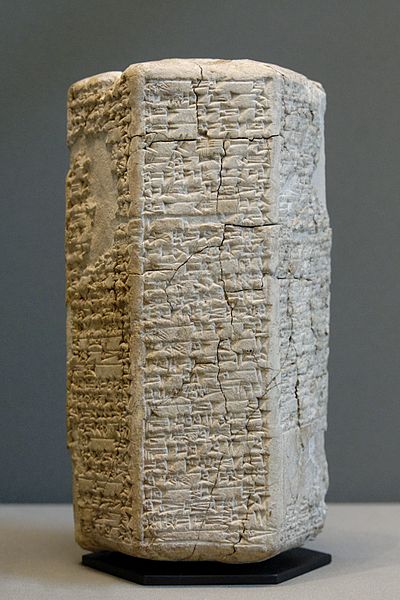Ishbi-Erra was the founder of the dynasty of Isin, reigning from c. 2017 — c. 1986 BC on the middle chronology or 1953 BC — c. 1920 BC on the short chronology. Ishbi-Erra was preceded by Ibbi-Sin of the third dynasty of Ur in ancient Lower Mesopotamia, and then succeeded by Šu-ilišu. According to the Weld-Blundell Prism, Išbi-erra reigned for 33 years and this is corroborated by the number of his extant year-names. While in many ways this dynasty emulated that of the preceding one, its language was Akkadian as the Sumerian language had become moribund in the latter stages of the third dynasty of Ur.
Ishbi-Erra appears in the Sumerian King List, on the Weld-Blundell Prism.
The Dynasty of Isin refers to the final ruling dynasty listed on the Sumerian King List (SKL). The list of the Kings Isin with the length of their reigns, also appears on a cuneiform document listing the kings of Ur and Isin, the List of Reigns of Kings of Ur and Isin.
Cylinder seal and modern impression Presentation scene, c. 2000–1750 B.C. Isin-Larsa.
Cylinder seal, c. 1822–1763 B.C. Isin-Larsa.
A praise poem to Iddin-Dagān, King of Sumer. Cuneiform script inscribed on a clay hexagonal prism, currently located at the Musée du Louvre (dated to c. 1950 BC.)
The "Code of Lipit-Ištar" (dated to c. 1860 BC)





